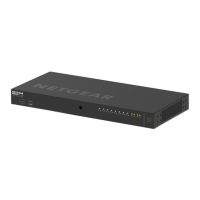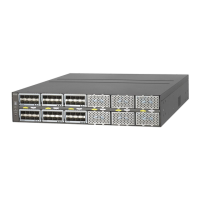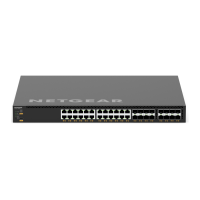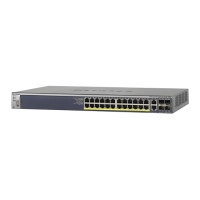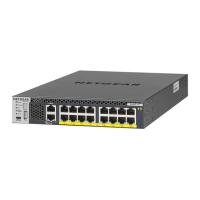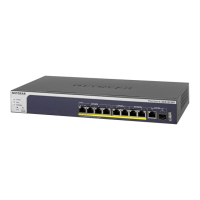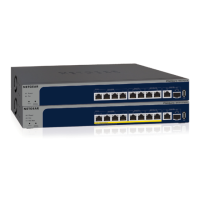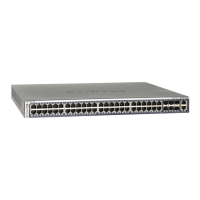CoS Queuing
224
Managed Switches
Untrusted Ports
• No incoming packet priority designation is trusted; therefore, the default priority value for
the port is used.
• All ingress packets from untrusted ports, where the packet is classified by an ACL or a
DiffServ policy, are directed to specific CoS queues on the appropriate egress port. That
specific CoS queue is determined by either the default priority of the port or a DiffServ or
ACL-assigned queue attribute.
• Used when trusted port mapping is unable to be honored - for instance, when a non-IP
DSCP packet arrives at a port configured to trust IP DSCP.
CoS Queue Configuration
CoS queue configuration involves port egress queue configuration and drop precedence
configuration (per queue). The design of these on a per-queue, per-drop precedence basis
allows you to create the service characteristics that you want for different types of traffic.
Port egress queue configuration:
• Scheduler type, strict vs. weighted
• Minimum guaranteed bandwidth
• Maximum allowed bandwidth per-queue shaping
• Queue management type, tail drop vs. WRED
Drop precedence configuration (per queue):
• WRED parameters
- Minimum threshold
- Maximum threshold
- Drop probability
- Scale factor
• Tail drop parameters, threshold
Per-interface basis:
• Queue management type, rail Drop vs. WRED
Only if per-queue configuration is not supported
• WRED decay exponent
• Traffic shaping for an entire interface
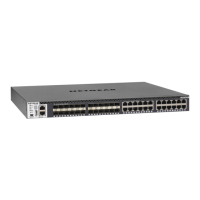
